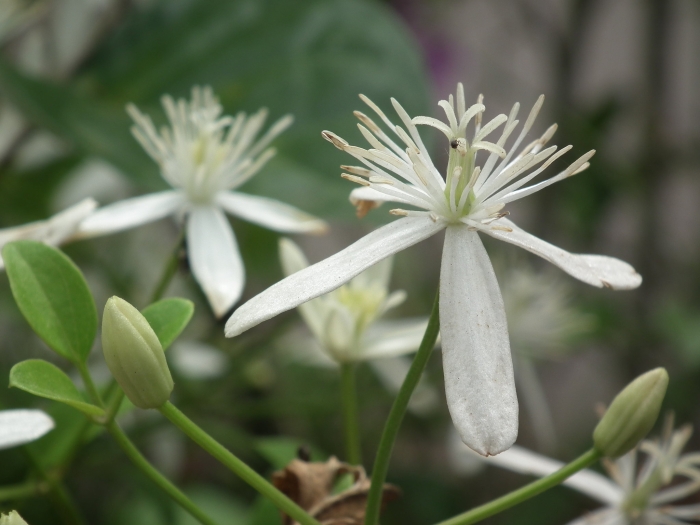Sweet Autumn Clematis
(Clematis terniflora)
Sweet Autumn Clematis (Clematis terniflora)
/
/

Ramesh NG
CC BY-SA 2.0




























































Estimated Native Range
Summary
Sweet Autumn Clematis is valued for its late-season blooms and ability to cover unsightly structures or create living screens. It is often used to adorn fences, trellises, and arbors, providing a lush, green backdrop throughout the growing season. This species is relatively low-maintenance, requiring minimal fertilization and watering once established. It thrives in a range of soil types, provided they offer good drainage. Pruning is typically done in late winter or early spring to promote vigorous new growth and abundant flowering. However, gardeners should be aware of its invasive potential; it can spread aggressively via wind-dispersed seeds and should be managed carefully to prevent unwanted spread.CC BY-SA 4.0
Plant Description
- Plant Type: Vine
- Height: 15-30 feet
- Width: 15-30 feet
- Growth Rate: Rapid
- Flower Color: Cream, White
- Flowering Season: Summer, Fall
- Leaf Retention: Deciduous
Growth Requirements
- Sun: Full Sun, Part Shade
- Water: Medium
- Drainage: Slow, Medium, Fast
Common Uses
Bee Garden, Bird Garden, Border Plant, Butterfly Garden, Deer Resistant, Fragrant, Groundcover, Hummingbird Garden, Rabbit Resistant, Showy Flowers
Natural Habitat
Forest margins, stream banks, and slopes in East Asia
Other Names
Common Names: Sweet Autumn Clematis, Yam-Leaf Clematis, Japanese Clematis, Japanese Virgin’s-Bower, Autumn Clematis, Leather-Leaved Clematis, Sweet Autumn Virgin’s-Bower, Yam-Leaved Clematis, Clématite À Panicules, Stor Vippklematis
Scientific Names: , Clematis terniflora, Clematis maximowicziana, Clematis dioscoreifolia, Clematis terniflora var. terniflora, Clematis terniflora var. robusta, Clematis dioscoreifolia var. robusta, Clematis terniflora f. maximowicziana, Clematis dioscoreifolia f. denticulata, Clematis flammula var. robusta
GBIF Accepted Name: Clematis terniflora DC.